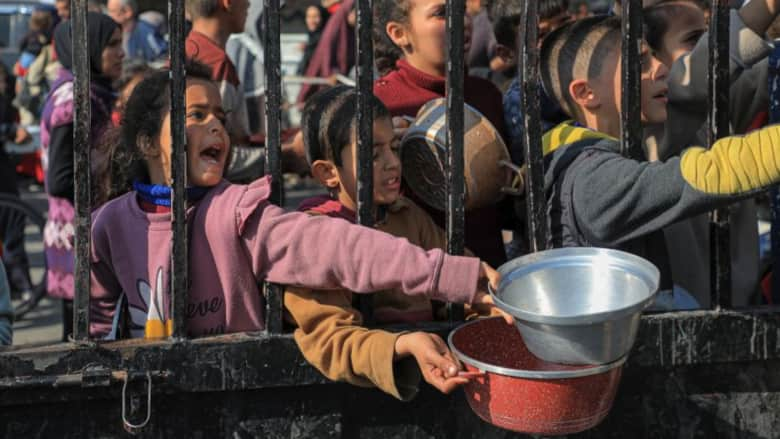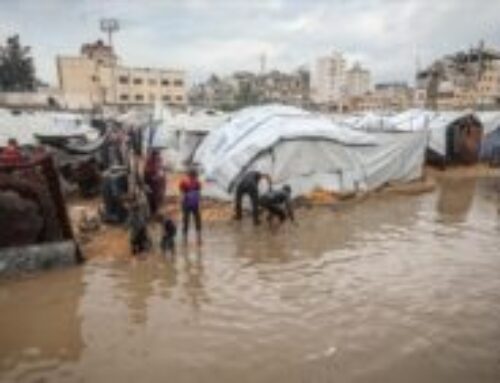On the shores of pain, Gaza rises each morning with empty stomachs and hearts caught between life and death. It is a city with daily suffering of hunger and pain.
The alleys groan under the weight of a suffocating siege that defies imagination — a grip that chokes the breath, turns bread into a distant dream, water into a deferred miracle, and medicine into a suspended hope.
Here, in the devastated Strip, nothing resembles life except the persistence of death. With each passing day of war, another page of exhausted dignity is folded away, as humanitarian organizations stand helpless before the chains, their pleas swallowed in the cold sands of politics.
Amid this shocking international silence, reports and statistics erupt as damning testimonies of a deliberate siege. Gaza endures it with the patience of a people starving, resisting even in the shadows once their light has been extinguished.
The ongoing blockade — lasting more than 11 weeks — has turned into a tragic scene drowning life in darkness and famine. Since March 2, 2025, the usurping entity has prevented the entry of any humanitarian aid into the Strip.
Bakeries have shut down, food and medicine supplies have vanished, and children suffer from a severe lack of life’s most basic necessities. Humanitarian reports indicate that no vital goods entered Gaza since March 2; by mid-May, around half a million people stood at the brink of catastrophic famine.
This grim reality is shared by thousands of families who wake up each day to a battle for a bite of bread. In displacement camps and empty markets, people groan from thirst and hunger. According to UNICEF, bakeries are closing, water systems are deteriorating, shelves are nearly bare, and the lifeline of humanitarian aid is on the verge of collapse.
Children are the most vulnerable victims of this siege. The World Health Organization (WHO) warns that nearly half of Gaza’s 2.1 million residents are under severe nutritional pressure, with approximately 470,000 facing “catastrophic famine,” according to global food security classifications.
The organization states that three-quarters of the population are at emergency or catastrophe levels of food insecurity — the two most extreme tiers.
In this dire situation, UNICEF’s Executive Director said that over 9,000 children have been admitted to acute malnutrition treatment centers since the beginning of the year. Doctors warn that dozens have already died from hunger.
In its latest report, the Ministry of Health recorded more than 57 child deaths due to malnutrition since the blockade began. Experts estimate that 71,000 children and 17,000 mothers will require urgent treatment for malnutrition in the coming months.
The WHO noted: “We don’t need to wait for an official famine declaration to know that people in Gaza are dying of hunger and disease, while food and medicine lie just minutes away across the border.”
Hunger and contaminated water are breeding grounds for disease, compounding Gaza’s suffering on multiple fronts. Médecins Sans Frontières reported that at least 20 healthcare facilities were damaged or rendered nonfunctional last week alone due to bombing by the usurping entity.
What remains of hospitals operates with extreme difficulty. A hospital director in northern Gaza described the conditions as “under total siege”; patients lie untreated, while doctors are immobilized under the fire of tanks and aircraft.
The WHO warns that the health system has “exceeded the breaking point.” Even without a single airstrike, the military blockade alone turns minor illnesses into death sentences. According to the WHO, “People in Gaza are caught in a deadly cycle: malnutrition and disease feed into each other, turning every ordinary illness into a potential fatality, especially among children,” as bodies lose the ability to recover.
The organization also reports that health facilities are nearly depleted — emergency medicines and surgical supplies are vanishing, with no way to replenish them due to the siege.
In the midst of this humanitarian storm, international organizations continue to issue pleas — to little effect. WHO has called for the immediate lifting of the blockade, stating: “Many in Gaza are dying while medical supplies rest just outside the Strip.” Its Director-General warned that every day of delay means more deaths from hunger and disease.
UNICEF’s Executive Director affirmed that international humanitarian law obliges the world to act, ensuring access to food, water, and medicine, and facilitating the flow of humanitarian aid.
The World Food Programme, in turn, emphasized that food aid convoys remain stuck at the borders while families die of hunger, stressing the urgent need to deliver food immediately.
Even UNRWA — the United Nations agency for Palestinian refugees — reported in its latest update (covering May 15–22, 2025) that over 11 weeks have passed without any humanitarian aid entering Gaza. It warned that essentials — including food, fuel, and vaccines — are on the verge of running out, and once again called for the lifting of the siege and safe aid access.
All these appeals remain echoes in the void. Aid is far too little and arrives far too late. Instead of global solidarity, Gaza’s cries are met with silence from all but a few world capitals.
Each day of this blockade writes a new story of agony into history: a child starves, an infant bleeds, an elder stares out with fading eyes longing for a drop of water. And yet, some truths remain unshaken: countless testimonies from humanitarian organizations confirm that Gaza is under a deliberate siege threatening its people’s very existence — and time has run out.





